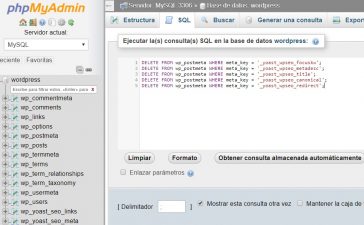WordPress is an excellent way to publish and manage the content on a Website, and one of the main reasons is because it makes your website run easily and without complications.
However, if you have several websites under control, you will have to work very hard when it comes to setting up and giving maintenance to all of them.
You have to program the content publishing of all sites, keep them updated, respond to the comments and more. It’s a lot of work even for someone with a lot of WordPress experience.
Fortunately, WordPress provides you with its own tool to help you manage various websites. It’s called Multisite WordPress, and it can be activated for new and existing sites.
Once this is done, you can add as many websites as you wish to your network, and execute them all from a single control panel dashboard.
In this article, we are going to talk about what Multisite is, when to use it, and when not to.
In the end, there are some useful videos you can watch to learn how to configure a multisite installation.
¿What is Multisite WordPress?
Multisite is a WordPress feature that comes with the release of WP 3.0 version dated 2010. It allows managing multiple websites from a single control panel. The platform refers to this conglomerate of sites as a network. Once you have configured Multisite, you can add as many websites as you wish to that network.
If you have ever found yourself dealing with the exhausting work of managing multiple WordPress websites, you probably understand how such a tool could help you.
Let’s break down some of the reasons why Multisite is so useful:
- You can do almost everything from a single dashboard. Having to track the credentials of various websites and jump from one to another can be frustrating and take a lot of time. With Multisite, you only need to track a single set of credentials to handle everything.
- You can publish new content for your websites. Multisite allows you to access your unique WordPress user and use it to publish new content for any of your pages.
- It allows you to manage themes and plugins for the entire network. As a Multisite administrator, you can choose which themes and plugins are available for each of the sites of your network.
- User management throughout the network has been simplified. Multisite also allows you to add new users to your network and establish their roles. This means that you don’t need to check individual panel of sites to manage users.
- WordPress updates are easier to manage. As a network administrator, you can update all your sites to the latest version of WordPress as soon as it becomes available. The process works in the same way as on individual websites: you receive a notification and you can update all your sites whenever you want.
Leaving WP Multisite away, there are a lot of tools that allow you to manage several WordPress websites. For example, you can use services such as ManageWP or MainWP.
The main difference between Multisite and these platforms is that they allow you to link websites from different hosts. This means that you could manage a network of sites around the world.
Regarding other features, most of the tools in this field offer all the functionality mentioned above. However, many of them are premium services that charge you for advanced features.
When to use Multisite WordPress (and when not)
If you need to manage several websites, Multisite WordPress is probably an option that you should consider. However, we are going to address some more specific scenarios that illustrate when this solution is recommended:
- You have a network of personal pages that do not require individual accommodation. If you feel comfortable with sharing hosting and you’re running several WordPress sites, Multisite is the natural choice.
- You need to manage customer websites. If you offer hosting services as part of your web development projects, you can consider including those sites in your network.
- You are creating a complex website that requires several subdirectories or subdomains. Multisite WordPress allows you to add new sites to your network using subdirectories or subdomains. This is a perfect fit for complex websites that need to be separated into specific sections, such as a blog and a store that run side by side.
Multisite is a powerful tool, but it is not perfect for every situation. It doesn’t allow owners of individual sites to use any plugin or theme they want, which means that they are at the mercy of the network administrator. If people working in your network need full access to WordPress features, they should probably opt for individual configurations.
In addition, all the sites in your network will share the same IP, due to how Multisite works. This is not a problem in most cases, but if you need a unique address for each of your sites, Multisite is not the best option.
It is likely that you already know if Multisite fits your needs or not.
If you want to run and test it in your WordPress installation, here you have some useful videos that guide you through installation and setup:
















